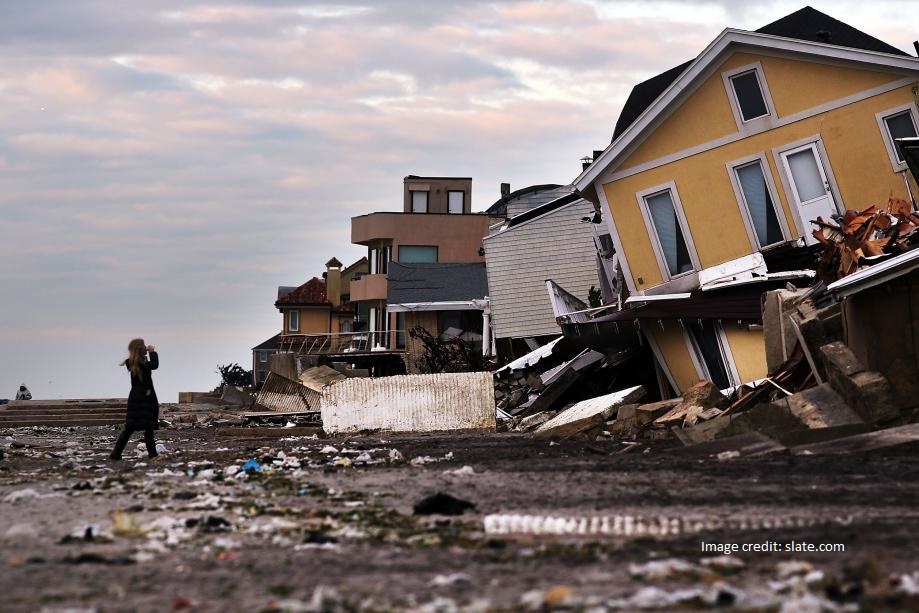
Case Study on Hurricane Sandy Survivors Experience
Abstract
Keywords
Full Text:
PDFReferences
Abbott, D., & Wilson, G. (2014). Climate change: Lived experience, policy and public action. International Journal of Climate Change Strategies and Management, 6(1), 5-8.
Adame, B., Miller, C., & Moore, S. (2013). Vested interest theory and disaster preparedness. Disasters, 37(1), 1-27. doi:10.1111/j.1467-7717.2012.01290.x
Ashley, S. T., & Ashley, W. S. (2008). Flood fatalities in the United States. Journal of Applied Meteorology and Climatology, 47(3), 805-818.
Bender, M., Brook, E., & Sowers, T. (1997). Gases in ice cores. Proceedings of the National Academy of Sciences, 94(16), 8343-8349
Berz, G. (1998, April). Catastrophes and climate change: Concerns and possible countermeasures of the insurance industry. Proceedings IPCC Adaption Workshop, Costa Rica, pp. 69-77
Davis, C. A., Galarneau, T. J., & Shapiro, M. A. (2013).
Intensification of Hurricane Sandy (2012) through extratropical warm core seclusion. Monthly Weather Review, 141(12), 4296-4321. doi:10.1175/MWR-D-13-00181.1
Downton, M. W., Miller, J. Z. B. &Pielke Jr., R. A. (2005). Reanalysis of U.S. National Weather Service flood loss database. National Hazards Review, 6, 13-22.
Egan, M. (2011). Risk management. In K. Penuel, & M. Statler (Eds.), Encyclopedia of disaster relief. (pp. 614-618). Thousand Oaks, CA: Sage Publications, Inc.
Elsner, J. B. (2008). Hurricanes and climate change. Bulletin of the American Meteorological Society, 89(5), 677-679. doi:10.1175/BAMS-89-5-677
Gopalakrishnan, C., & Okada, N. (2007). Designing new institutions for implementing integrated disaster risk management: Key elements and future directions. Disasters, 31(4), 353-372. doi:10.1111/j.1467-7717.2007.01013.x
Hecht, A. D., &Tirpak, D. (1995). Framework agreement on climate change: A scientific and policy history. Climatic Change, 29, 371-402.
Hill, D. (2014, January). Fighting back. Civil Engineering, 84(1), 50-55. Introduction to preparedness. (2014). Scandinavian Journal of Public Health, 42(14), 148-150.
Johnson, H., & Wilson, G. (1999). Institutional sustainability as learning. Development in Practice, 9(1), 43-55.
Jones, S. C., &Thorncroft, C. D. (2000). The extratropical transitions of Hurricanes Felix and Iris in 1995, Weather Review, 128, 947-972
Kiernan, M. K., &Lenhardt, M. F. (2013). What's in a name(d) storm? what sandy has taught us about flood, storm surge, and FEMA flood zones. FDCC Quarterly, 63(4), 318-339.
Kron, W. (2000). Natural disasters: Lessons from the past - concerns for the future. Geneva Papers on Risk & Insurance - Issues & Practice, 25(4), 570-581.
Kunreuther, H., & Michel-Kerjan, E. (2011). People get ready disaster preparedness. Issues in Science and Technology, 28(1), 39-50.
Lapadat, J. (2010). Thematic analysis. In A. Mills, G. Durepos, & E. Wiebe (Eds.), Encyclopedia of case study research. (pp. 926-928). Thousand Oaks, CA: SAGE Publications, Inc.
Louw, E., & van Wyk, S. (2011). Disaster risk management - planning for resilient and sustainable societies. Civil Engineering: Magazine of the South African Institution of Civil Engineering, 19(7), 16-18.
National Research Council. (2010a). Advancing the science of climate change. Washington, DC: National Academies Press.
Pidot, J. (2013). Deconstructing disaster. Brigham Young University Law Review, 2, 213-257.
Stern, P. C., & Weber, E. U. (2011). Public understanding of climate change in the United States. American Psychologist, 66(4), 315-328. http://dx.doi.org/10.1037/a0023253





